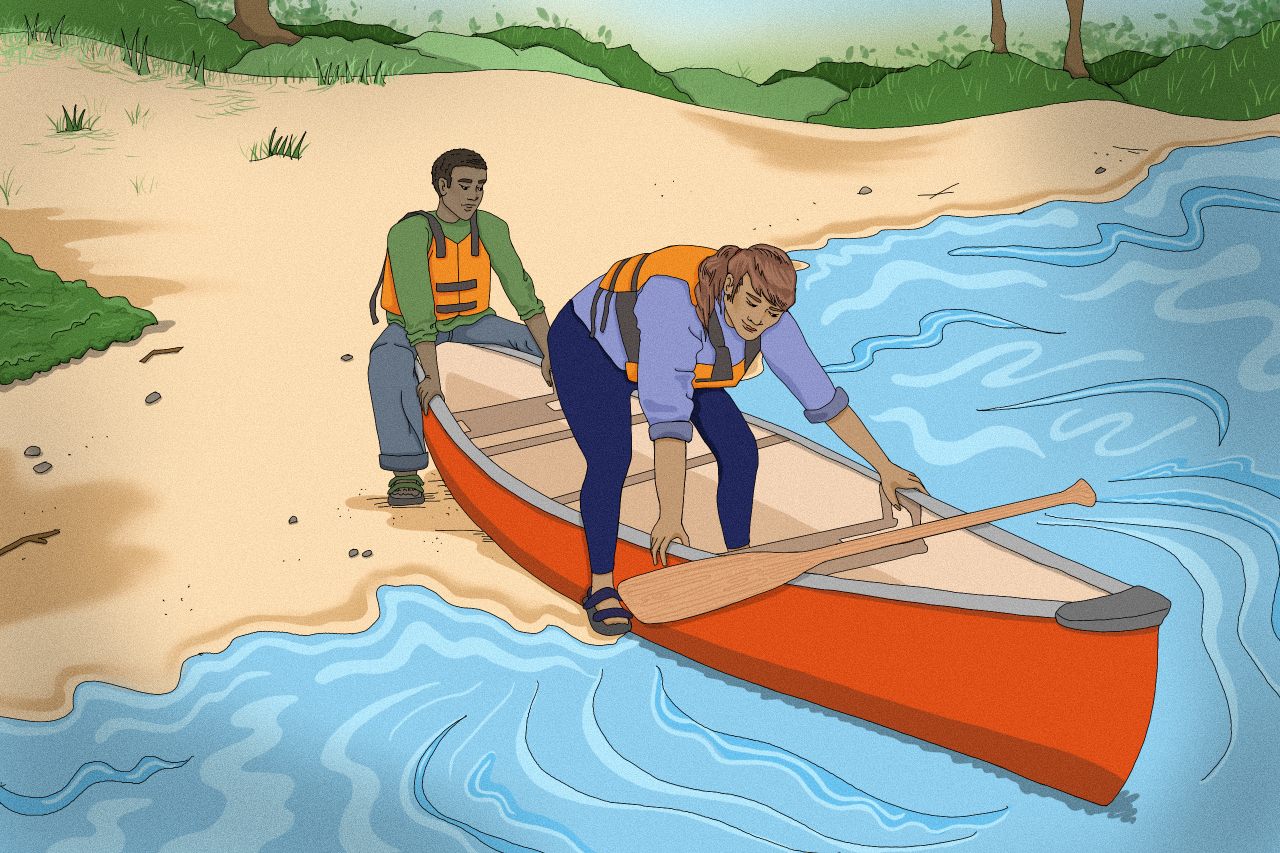How to Get In (or Out) of a Kayak or Canoe Without Embarrassing Yourself
Make a splash—in a good way—and impress friends with a smooth transition from land to lake.
Getting into a canoe is unnerving. Failure means capsizing, plus looking foolish in front of that cute camp counselor. But as you wobble aboard, know you’re not alone. Even the experts dump their boats from time to time.
“I’ve flipped over completely in six inches of water trying to board my kayak,” says retired park ranger and marine biologist Kristie Killam. “Even though I think I know what I’m doing, it can still be daunting.”
Below are practical steps to help you glide more gracefully into that canoe or kayak, starting with one key concept: “It’s all about having a relationship with your center of gravity,” says Jon Turk, whose exploits earned him a National Geographic adventurer of the year title in 2012.
Turk likens canoes to bicycles: They’re both machines that become an extension of you, if you can maintain constant communication with them about your balance.
“Build that relationship from the very moment you step into it, and you’ll become one and move together,” he says.

Launching canoes and kayaks from shore, like a boat ramp or the beach, is the easiest way to go. If you have gear, put that in first, making sure its weight is balanced in the middle, along the center line. Place the boat perpendicular to the shoreline, either all the way in the water or with a small bit on land. If there’s two passengers, have one person stabilize it while the other steps in.
The golden rule of stepping in is to keep your feet on the center line and traverse the canoe in a low crouch. Slide your hands along the gunnels for balance, then gradually lower your center of gravity until you’re seated. When it’s time to get out, just do all of that in the reverse order.
When launching a kayak from shore, it’s usually easiest to back your way into the water. Again, make sure at least half of the boat is in the water. Then, if you’re in a traditional recreational kayak (where you sit in a partially enclosed cockpit), step in the middle and ease your way down. If you’re on a sit-on-top kayak, you can just straddle it and plop yourself down.
Launching from a dock is a bit different. For canoes, place them parallel to the dock. Again, have one person stabilize it while the other grabs both gunnels and steps gently into the center, at the lowest part of the boat. If you feel unstable, start from a sitting position on the dock. It can also help to place your paddle across the gunnels and then use it to stabilize your center of gravity across the whole craft as you enter.
For kayaks at docks, especially floating docks, “that’s a whole other can of worms,” says Killam. “I’ve seen people try to board from floating docks where they flip ass over teacup into the water before barely even touching the kayak.” So, if you find yourself on a floating dock, approach the situation slowly and thoughtfully.

Another way to look particularly foolish on a boating adventure is to be flippant about safety. Always start by familiarizing yourself with the safety equipment and gear while still on land. Bring a dry bag or box for your phone and other water-sensitive items. Wear your life jacket and let someone know where you’re going and when you plan on being back. Always go up the current or against the tide first, so you know you’ll have enough energy to paddle back. Keep your eye on the weather. If you’re unsure of your skills, avoid windy days where waves make paddling more challenging, and very cold water, which could be treacherous if you flip or fall overboard.
If you’re feeling particularly nervous, first practice getting into your vessel on land. “It will be a little wiggly still, so you’ll get a sense of what it will feel like in the water, but if you tip over nothing will be lost,” says Killam.
And if you do tip over in the water, don’t panic. Embrace the embarrassment. Becoming proficient at getting in and out of boats takes practice, and our ability to do it changes over time, depending on our fitness level, experience, and age.
Remember, the point is to have fun trying it and, if you end up liking it, to keep at it.
“We live in a civilized world where most things are built idiotproof,” says Turk. “But nature is not idiotproof. That’s why we go there. Also, it’s not like, ‘Oh, I want to go canoeing, but it’s a bummer that I might tip over.’ No, no, no, that’s missing the point. I want to go canoeing because it puts me in a headspace where I’m constantly aware of my center of gravity. And this teaches you all kinds of things.”












Follow us on Twitter to get the latest on the world's hidden wonders.
Like us on Facebook to get the latest on the world's hidden wonders.
Follow us on Twitter Like us on Facebook